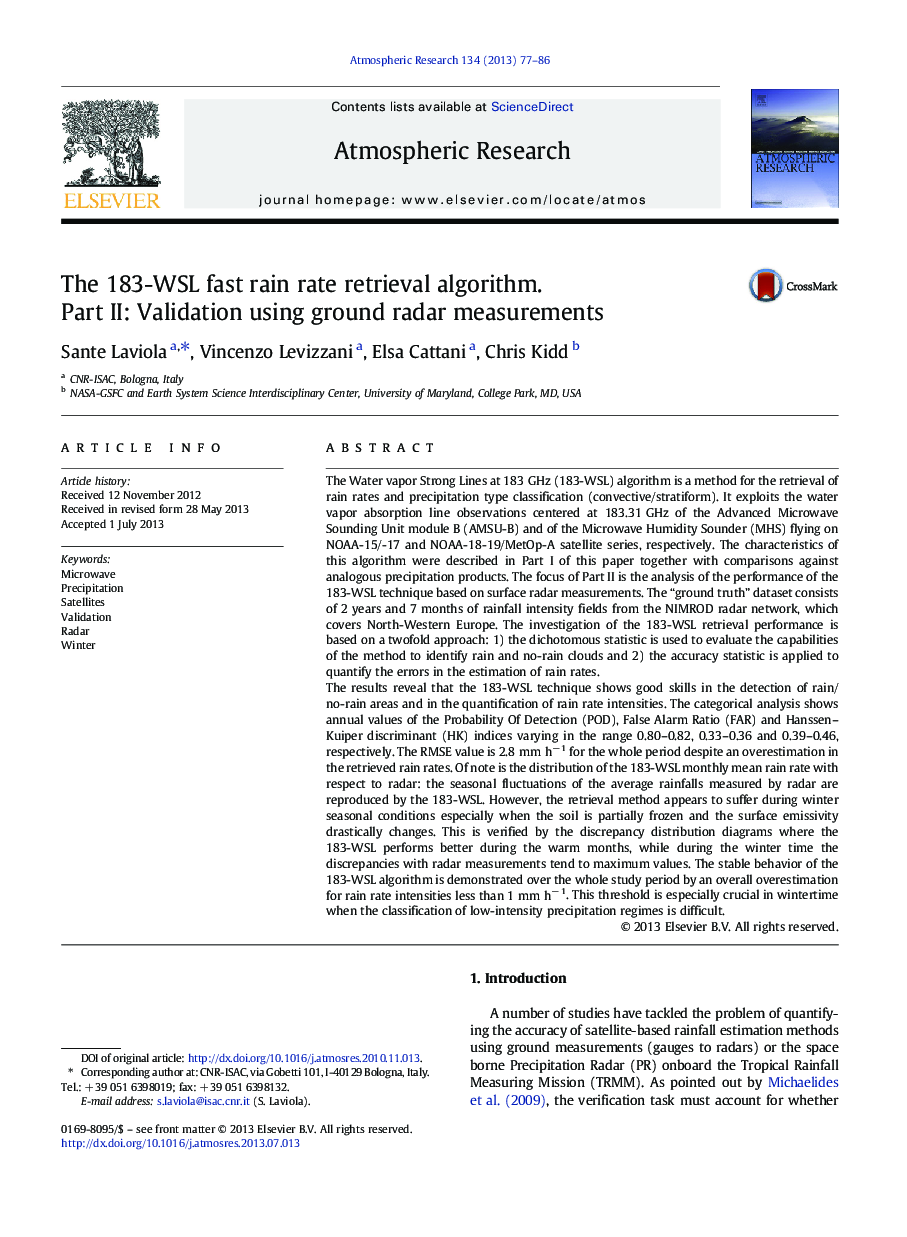| کد مقاله | کد نشریه | سال انتشار | مقاله انگلیسی | نسخه تمام متن |
|---|---|---|---|---|
| 4449987 | 1620535 | 2013 | 10 صفحه PDF | دانلود رایگان |

• The 183-WSL algorithm is validated against ground radar data.
• The statistical analysis is conceived for operational and research applications in hydrometeorology.
• The radar-algorithm comparison shows that the algorithm performances increase for intensities > 1 mm h– 1.
• The 183-WSL convective/stratiform rainfall classification is evaluated for winter and summer seasons.
The Water vapor Strong Lines at 183 GHz (183-WSL) algorithm is a method for the retrieval of rain rates and precipitation type classification (convective/stratiform). It exploits the water vapor absorption line observations centered at 183.31 GHz of the Advanced Microwave Sounding Unit module B (AMSU-B) and of the Microwave Humidity Sounder (MHS) flying on NOAA-15/-17 and NOAA-18-19/MetOp-A satellite series, respectively. The characteristics of this algorithm were described in Part I of this paper together with comparisons against analogous precipitation products. The focus of Part II is the analysis of the performance of the 183-WSL technique based on surface radar measurements. The “ground truth” dataset consists of 2 years and 7 months of rainfall intensity fields from the NIMROD radar network, which covers North-Western Europe. The investigation of the 183-WSL retrieval performance is based on a twofold approach: 1) the dichotomous statistic is used to evaluate the capabilities of the method to identify rain and no-rain clouds and 2) the accuracy statistic is applied to quantify the errors in the estimation of rain rates.The results reveal that the 183-WSL technique shows good skills in the detection of rain/no-rain areas and in the quantification of rain rate intensities. The categorical analysis shows annual values of the Probability Of Detection (POD), False Alarm Ratio (FAR) and Hanssen–Kuiper discriminant (HK) indices varying in the range 0.80–0.82, 0.33–0.36 and 0.39–0.46, respectively. The RMSE value is 2.8 mm h− 1 for the whole period despite an overestimation in the retrieved rain rates. Of note is the distribution of the 183-WSL monthly mean rain rate with respect to radar: the seasonal fluctuations of the average rainfalls measured by radar are reproduced by the 183-WSL. However, the retrieval method appears to suffer during winter seasonal conditions especially when the soil is partially frozen and the surface emissivity drastically changes. This is verified by the discrepancy distribution diagrams where the 183-WSL performs better during the warm months, while during the winter time the discrepancies with radar measurements tend to maximum values. The stable behavior of the 183-WSL algorithm is demonstrated over the whole study period by an overall overestimation for rain rate intensities less than 1 mm h− 1. This threshold is especially crucial in wintertime when the classification of low-intensity precipitation regimes is difficult.
Journal: Atmospheric Research - Volume 134, 1 December 2013, Pages 77–86